TotalEnergies and the climate: the facts
06/18/2020

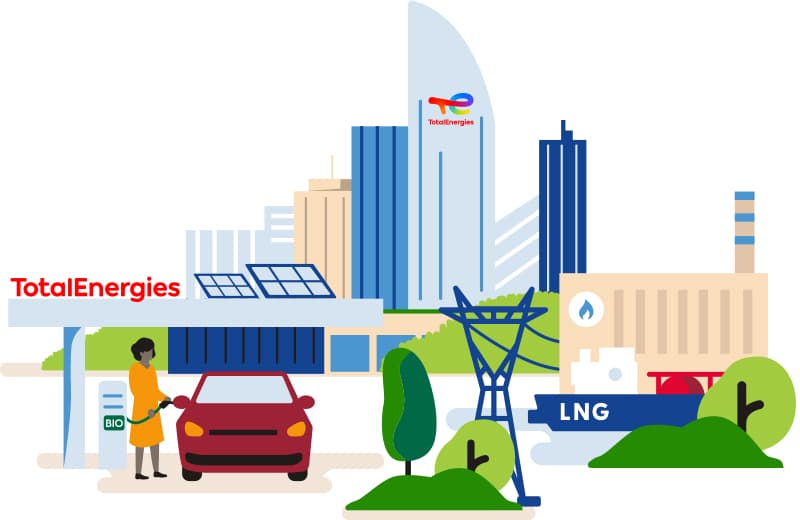
More energy, less carbon
Climate change is happening, and it has been established that human activity is the main cause. The global economy depends, to a great extent, on the use of fossil fuels because of their high energy density and affordable cost. However, fossil fuels also emit greenhouse gases (GHG) when burned, notably carbon dioxide (CO 2). GHG emissions must be reduced to limit the temperature increase; this is both urgent and complex. Everyone, from governments to businesses and consumers, will have to do their part.
TotalEnergies must participate in reducing overall greenhouse gas emissions while also satisfying rising energy demand driven by economic and demographic growth. In May 2020, it announced a new climate ambition to get to net zero by 2050. This means reconciling two of the United Nations’ Sustainable Development Goals: access to affordable and clean energy and climate action. TotalEnergies’s ambition is to provide as many people as possible with energy that is more reliable, affordable and clean.
2020 Climate Report, pp 01-07 – Foreword by Patrick Pouyanné: Together, let’s speed up the energy transition to create a carbon-neutral society by 2050
TotalEnergies Is Actively Involved
TotalEnergies is reducing emissions from its operations, adapting its energy mix, helping to change demand from its customers and investing in carbon sinks.
2020 Climate Report, p. 18 – Acting on emissions
2020 Climate Report, p. 25 – Acting on products
2020 Climate Report, p. 34 – Acting on demand
2020 Climate Report, p. 40 – Investing in carbon sinks
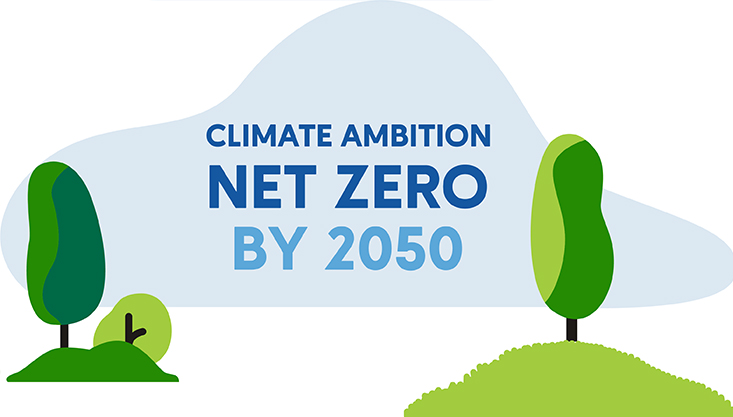
Our ambition
TotalEnergies’s climate ambition is to get to net zero by 2050.
TotalEnergies shares the ambition to get to net zero emissions by 2050, together with society, for its global business across its production and energy products used by its customers (Scopes 1+2+3).
Three major steps to achieve this ambition, with a commitment to 2030 targets for each one:
- 1. Net-zero emissions across TotalEnergies's operated facilities worldwide by 2050 or sooner (Scopes 1+2).
➡ 2030 targets:
Reduce net Scope 1+2 emissions (including carbon sinks) from operated oil and gas facilities by at least 40% from 2015 levels. - 2. Net-zero for all indirect emissions related to TotalEnergies energy products used by customers worldwide by 2050 or sooner (Scope 3).
➡ 2030 targets:
1. Achieve a 20% reduction from 2015 levels in the average carbon intensity of energy products used by customers worldwide.
2. Reduce the absolute value of worldwide Scope 3 emissions linked to products used by customers to below 2015 levels. - 3. Net zero emissions across TotalEnergies’s production and energy products used by its customers in Europe by 2050 or sooner (Scopes 1+2+3).
➡ 2030 targets:
Achieve a 30% reduction from 2015 levels in the absolute value of Scope 1+2+3 GHG in Europe.
Total’s climate objectives:
- A reduction in GHG emissions (Scopes 1 & 2) from 46 million tons of CO2e in 2015 to less than 40 million tons of CO2e in 2025, on operated oil and gas installations.
- An 80% reduction in routine flaring at operated facilities between 2010 and 2020, then its complete elimination by 2030.
- An improvement in energy efficiency at operated facilities of 1% per year on average between 2010 and 2020.
- Methane intensity of operated gas facilities close to zero (less than 0.1% of the commercial gas produced).
Results:
- An 8% decline in the net carbon intensity of Total’s products since 2015, excluding COVID-19 effect.
- A reduction in GHG emissions (Scopes 1 & 2) at operated oil and gas facilities from 46 million tons of CO2e in 2015 to 39 million tons of CO2e in 2020, excluding COVID-19 effect.
- A more than 90% reduction in routing flaring between 2010 and 2020.
- A 10% improvement in energy efficiency between 2010 and 2020.
- Methane intensity for Upstream hydrocarbon activities of 0.15% of commercial gas produced for operated oil and gas facilities in 2020, and of less than 0.1% for operated gas facilities.
Climate Report 2020, p. 10 – Our ambition
Climate Report 2020, p. 18 – Acting on emissions
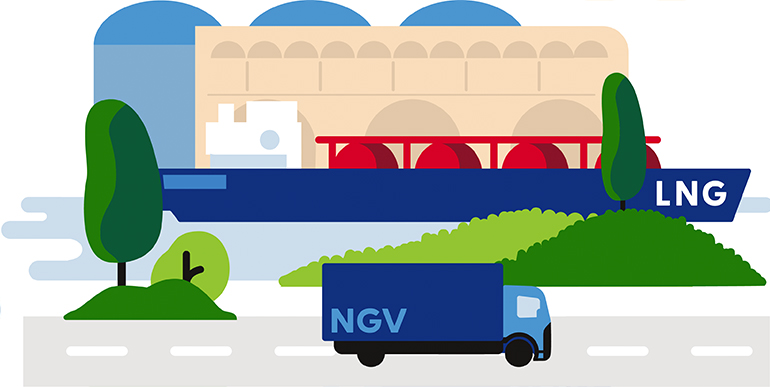
Natural gas, biogas and hydrogen: allies of the energy transition
By expanding its presence across the value chain for natural gas, biogas and hydrogen, TotalEnergies is decarbonizing its energy mix and ensuring access to reliable, flexible sources of renewable power.
Natural gas is a key to the energy transition. It produces half the full-lifecycle CO 2 emissions of coal in power generation, partners well with intermittent renewable energies and responds effectively to seasonal variations in demand.
TotalEnergies has acquired several combined-cycle gas turbine power plants in France.
It is also developing new uses for natural gas (with lower emissions than petroleum-based fuels) in road and maritime transportation.
TotalEnergies is active across the full value chain, from extraction and transportation to processing and sales.
Between 2005 and 2020, the share of natural gas in TotalEnergies’s hydrocarbon output rose from 35% to 55%. It is expected to be close to 60% in 2030.
TotalEnergies is the world’s second-largest publicly traded liquefied natural gas (LNG) company.
TotalEnergies is also at the forefront in the drive to reduce emissions of methane, a powerful greenhouse gas.
In 2020, TotalEnergies created two business units, one dedicated to biogas and the other to clean hydrogen, with the aim of reducing the carbon intensity of its gas-fired power plants.
2020 Climate Report, p 26 – Natural gas, biogas and hydrogen: allies of the energy transition
2020 Climate Report, p. 28 – Hydrogen, a promising energy source
2020 Climate Report, p. 22 – Controlling methane emissions
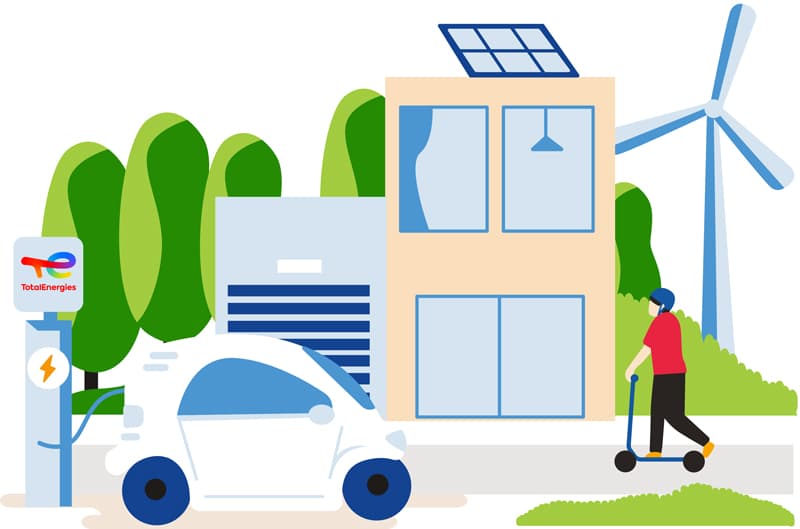
Renewables and Electricity: A Key Path Forward to Address the Climate Issue
In the 21st century, electricity will be called on to meet a growing share of people’s energy needs. That’s why TotalEnergies is growing its presence in this market. The challenge lies in generating electricity from low-carbon or carbon-free energy sources. TotalEnergies is expanding in electricity, especially renewables-based electricity, from production to distribution to storage. This is a key part of its strategy to get to net zero by 2050.
The Total Eren and Total Quadran affiliates were acquired to drive this strategy in renewable energy production, while TotalEnergies distributes electricity to businesses and consumers in Europe (which it did previously under the banner Total Direct Energie).
Because solar and wind power are intermittent by nature, TotalEnergies is investing in stationary storage solutions to limit loss and optimize the injection of current into tomorrow’s power grids.
2020 saw the Group step up the diversification of its energy mix, notably in renewables, with wind and solar production capacity doubling from 3GW at the end of 2019 to 7GW at the end of 2020 and a target of 35GW for 2025. This trend is continuing in 2021, with the ambition of reaching 100GW by 2030 and becoming one of the world’s top five renewable power companies.
*International Energy Agency: 2019 Sustainable Development Scenario
2020 Climate Report, p. 29 – Electricity: building a world leader
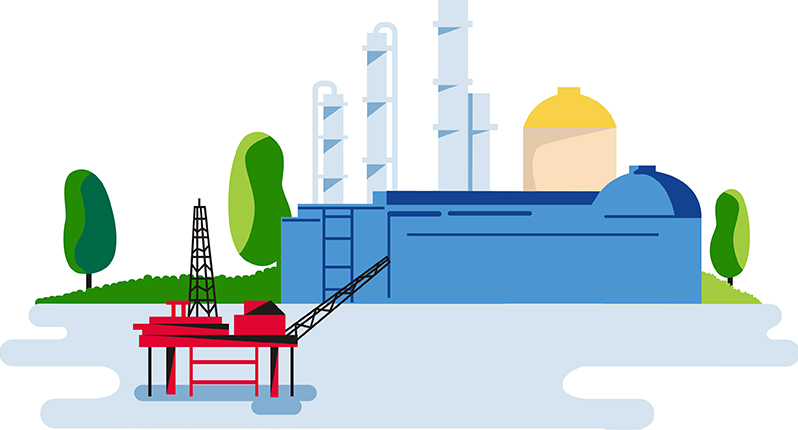
Encouraging a Sparing Use of Oil
Oil has demonstrated its many qualities over the years, including high energy density, exceptional stability (making it easy to ship) and affordable cost. However, the use of oil emits large amounts of CO2. For this reason, the Company believes that oil should be reserved for targeted uses and replaced by other energy sources when it can be easily substituted.
In the long term, TotalEnergies is anticipating flat or declining oil demand and is concentrating on low breakeven assets.
TotalEnergies will not conduct oil field exploration activities in the Arctic sea ice and will not approve any capacity increase in the Canadian oil sands.
The incorporation of biofuels can help reduce CO2 emissions from road and air transportation. As a pioneer in biofuels for more than 20 years, TotalEnergies is now a major player in Europe.
2020 Climate Report, p. 32 – Decarbonizing and saving liquid energies

Developing carbon sinks
TotalEnergies’s climate ambition is to get to net zero by 2050, and it is already working actively to achieve this goal. The Company invests in natural carbon sinks like forests and wetlands through its Nature Based Solutions (NBS) business unit, formed in 2019 with a budget of $100 million a year as from 2020. An initial project will be launched in the Republic of the Congo to plant 40,000 hectares of forest.
TotalEnergies is also involved in carbon capture and storage (CCS) through a number of major projects, including Northern Lights in Norway. In Dunkirk it is part of project 3D for the demonstration of an innovative new CO2 capture technology.
In addition, TotalEnergies helps its customers reduce their carbon footprint. The TotalEnergies Ecosolutions label created in 2009 makes it possible, among other things, to evaluate the carbon performance of Total products and services and promote innovative solutions that offer an environmental performance superior to the market benchmarks. In all, 12 million tons of carbon emissions have been avoided over 10 years thanks to TotalEnergies Ecosolutions products and services.
Lastly, the Group’s GreenFlex energy efficiency consulting affiliate helps businesses and regions improve their energy and environmental performance. It has worked with more than 700 clients to date.
2020 Climate Report, p. 40 – Investing in carbon sinks

Putting a Global Price on Carbon to Speed the Transition
TotalEnergies calls for a global price on carbon worldwide. By integrating an energy source’s carbon content in its price, this system makes high-emission sources more expensive and promotes lower carbon technologies.
Putting a price on carbon gives all players an incentive to shift faster from coal to natural gas and renewable energies for electricity production.
Over the long term, it’s also a way to channel investment to research into low carbon technologies and carbon capture, utilization and storage (CCUS).
A sufficient price would promote TotalEnergies’s objective of net zero by 2050.
2020 Climate Report, p. 49 – On the Front Lines on Carbon Pricing




